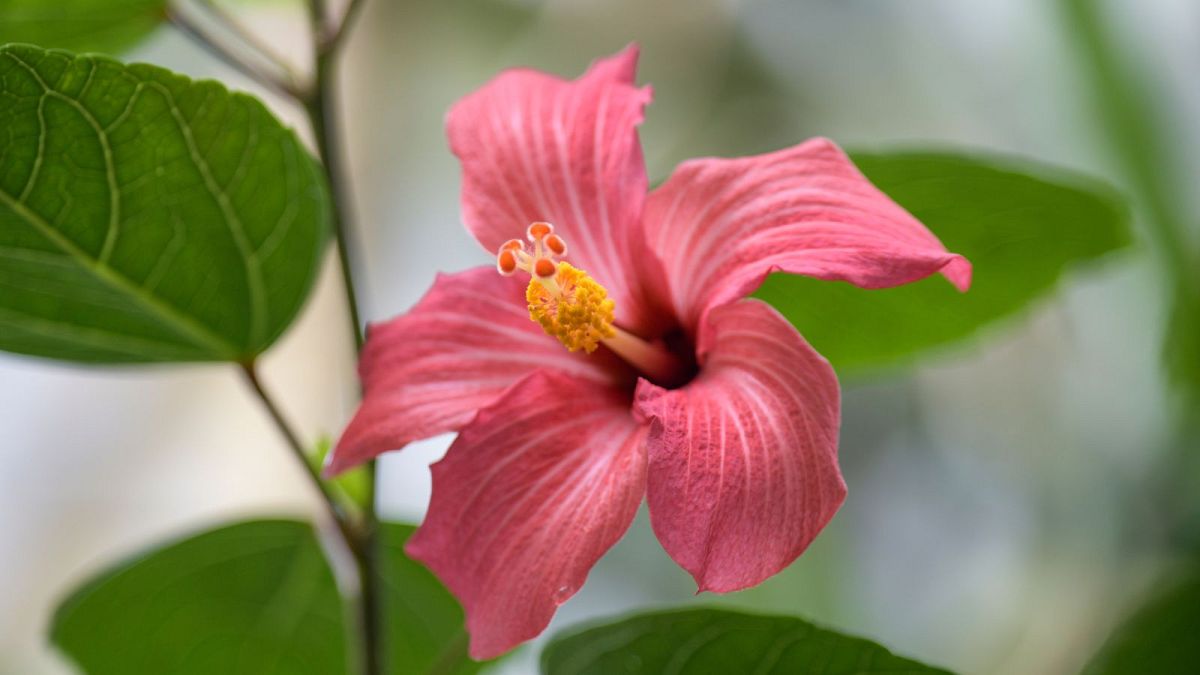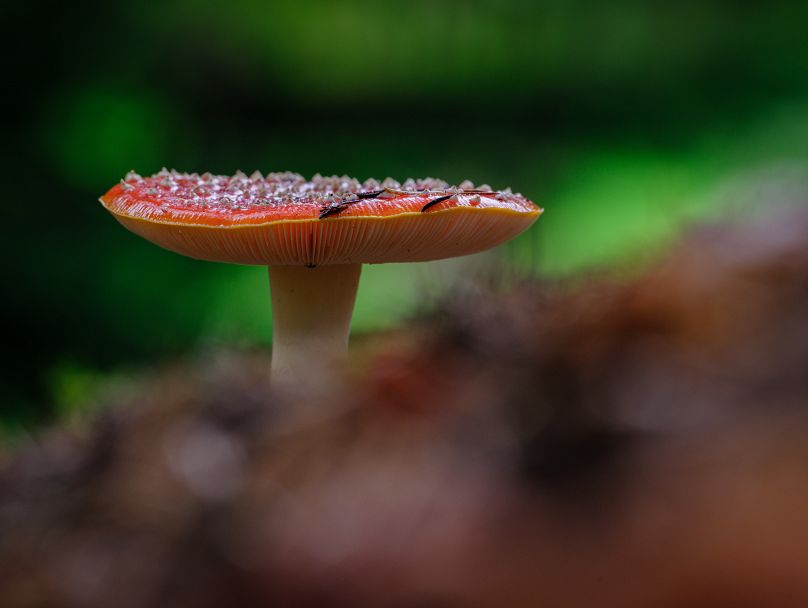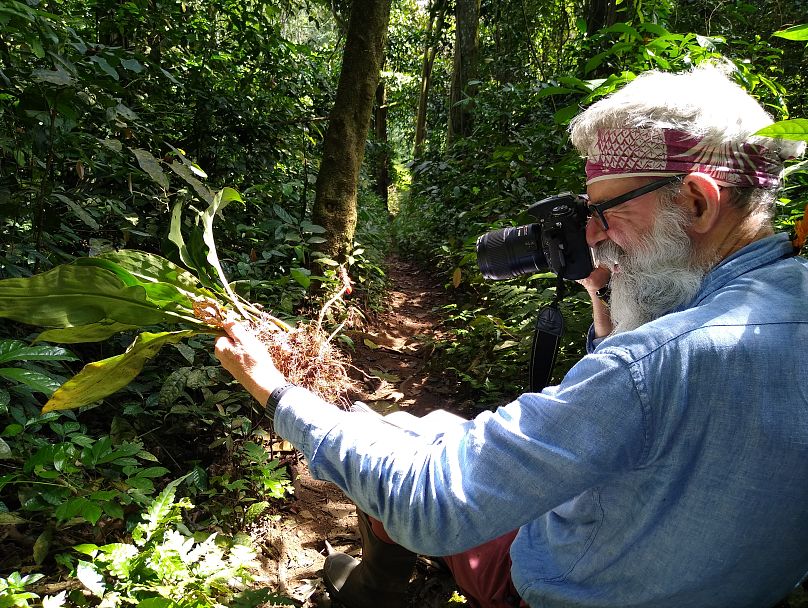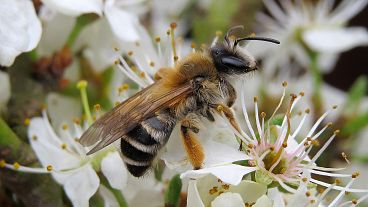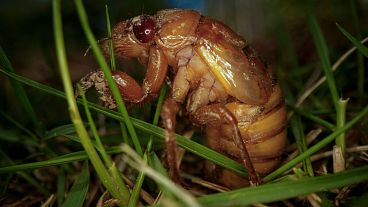How can you save what you can’t name? Major new plant and fungi report tackles ‘knowledge gaps’ and urges conservation.
More than 75 per cent of the planet’s ‘undescribed’ plant species are already threatened with extinction, according to a major new report from Kew Gardens in the UK.
All newly encountered species have to be formally named and described. But the sheer number of new plants and fungi still being discovered every year - and the dual crises of biodiversity loss and climate change - mean that precious organisms are slipping through our fingers.
Published today (10 October) Kew’s fifth ‘State of the World’s Plants and Fungi’ brings together all the latest research and outlines where critical gaps in knowledge remain.
“At a time when plants and fungi are increasingly under threat, we need to act fast to fill knowledge gaps and identify priorities for conservation,” says Professor Alexandre Antonelli, Director of Science at Royal Botanic Gardens (RBG) Kew.
Here are some of the key takeaways from the report, which is based on the work of more than 200 international researchers and 25 cutting-edge scientific papers.
Describing new plant and fungi species is key to protecting them
At COP15 last year, countries agreed to reduce the extinction rate of all species under the Kunming-Montreal Global Biodiversity Framework.
But experts are still hard-pressed to answer a simple question: how many plant and fungi species are there globally?
Luckily, two major advances are helping scientists to be more precise. Firstly, The World Checklist of Vascular Plants [WCVP] has been compiled after 35 years of research by Belgian botanist Rafaël Govaerts, who heads up the Plants and Fungal Names team at Kew.
“More than 160 years ago, Charles Darwin dreamt of a complete list of plant species from every corner of the globe,” says Govaerts.
“This has been my dream too, prompted by the rampant destruction of the rainforests and biodiversity in general that I witnessed as a student in the 1980s, and it's exhilarating to see it finally come together.”
Secondly, analyses of environmental DNA in soil samples across the world have provided a wealth of new information on fungal diversity.
Scientists estimate there are 2.5 million species of fungi
To date, only 155,000 species of fungi have been formally named. But researchers have long suspected the kingdom of fungi is as diverse, if not more, than those of plants and animals, with past estimates ranging from 250,000 to 19 million species.
Now, thanks partly to technological breakthroughs such as DNA metabarcoding, scientists estimate there are about 2.5 million species of fungi globally. This means that more than 90 per cent of fungal species remain unknown to science, and only 0.02 per cent have had their global extinction threat level assessed.
“Naming and describing a species is the vital first step in documenting life on Earth,” says Dr Tuula Niskanen from the University of Helsinki.
Knowing a species enables researchers to share information, assess its conservation status to understand whether it is at risk of extinction, and to explore its potential benefit to humans.
Plants and fungi underpin all life on Earth, providing valuable ecosystem services that support our livelihoods and provide us with food, medicine, clothing and raw materials.
So with only around 10 per cent of the world’s fungal biodiversity so far described, we could be missing out on species with game changing functions - like ones with enzymes that can break down plastic.
“It is essential to know what species of fungi we have here on Earth and what we need to do for them, so that we don’t lose them,” adds Niskanen.
Three in four undescribed vascular plants at risk of extinction
Around 350,000 species of ‘vascular’ plants - those with specific tissues for conducting water and nutrients around their structures - are already known to science. The vast majority of plant species fall under this category, from flowering plants to seed plants like conifers and cycads, and ferns.
The problem is that as many as 100,000 of them are yet to be formally named, and scientists fear the odds are stacked against them. New estimates suggest as many three in four undescribed vascular plants are likely to be already threatened with extinction.
This figure was reached after scientists analysed data from the WCVP with the IUCN Red List of Threatened Species, to see what links existed between the year a plant species is formally described and its extinction risk.
They found a clear relationship: more than 77 per cent of species described in 2020 met the criteria to be assessed as threatened. And species described more recently are more likely to meet the criteria for a higher threat category such as endangered or critically endangered.
Almost half of all flowering plant species could go extinct
Looking at flowering plants specifically, researchers say that 45 per cent of all known species could be under threat of extinction.
Orchids are among the most imperilled, as well as the plant families Bromeliaceae, which includes pineapple; Piperaceae, home to black pepper; and Araceae, which includes many important crops.
One plant, known as the ‘orchid of the falls’ - though not part of the Orchidaceae family but rather a group that grows by waterfalls and rapids - is a case study in fragility. The Saxicollela deniseae was collected along the Konkouré River in Guinea in 2018 by botanist Denise Molmou.
But by the time the species was formally published in May 2022, satellite imagery dated to November 2021 showed the falls where it was found were flooded by the construction of a hydroelectric dam 30km downstream. Scientists now believe Molmou was the first and likely last person to ever see the species in the wild.
“My personal observation is that the number of threatened plants has increased shockingly in recent years,” says Dr Martin Cheek, Senior Research Leader in Accelerated Taxonomy at Kew.
“When I started out as a taxonomist 30 years ago, you wouldn’t even consider that a species you were publishing might go extinct; you just assumed it was going to still be around in the wild.”
Should new species be treated as threatened until proven otherwise?
Based on the above findings, Kew scientists say yes. They’re calling for all newly described species to be treated as though they have been assessed as threatened unless proven otherwise.
Unfortunately, more and more newly described species have narrow ranges (many are described from a single location) and are undergoing population and/or habitat decline.
“If accepted, our recommendation could aid in the protection of many tens of thousands of undescribed threatened species, by treating them as threatened as soon as they become known to us,” says Dr Matilda Brown, researcher in Conservation Assessment and Analysis at Kew.
Scientists believe that prioritising these species for full assessments on the IUCN Red List will give them a better chance of survival.
At the same time, Kew scientists are seeking to shed light on the planet’s “biodiversity darkspots” - areas where plant diversity and distribution data is lacking.
Of the 32 spots identified, at least 44 per cent are in tropical Asia - giving a clear idea of where further fieldwork is necessary.
